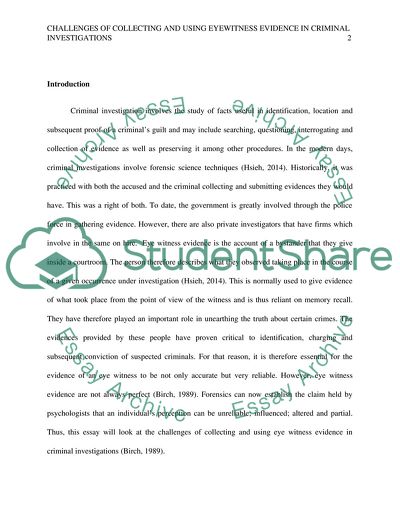Cite this document
(What are the challenges of collecting and using eyewitness evidence in Essay, n.d.)
What are the challenges of collecting and using eyewitness evidence in Essay. https://studentshare.org/law/1862361-what-are-the-challenges-of-collecting-and-using-eyewitness-evidence-in-criminal-investigations
What are the challenges of collecting and using eyewitness evidence in Essay. https://studentshare.org/law/1862361-what-are-the-challenges-of-collecting-and-using-eyewitness-evidence-in-criminal-investigations
(What Are the Challenges of Collecting and Using Eyewitness Evidence in Essay)
What Are the Challenges of Collecting and Using Eyewitness Evidence in Essay. https://studentshare.org/law/1862361-what-are-the-challenges-of-collecting-and-using-eyewitness-evidence-in-criminal-investigations.
What Are the Challenges of Collecting and Using Eyewitness Evidence in Essay. https://studentshare.org/law/1862361-what-are-the-challenges-of-collecting-and-using-eyewitness-evidence-in-criminal-investigations.
“What Are the Challenges of Collecting and Using Eyewitness Evidence in Essay”. https://studentshare.org/law/1862361-what-are-the-challenges-of-collecting-and-using-eyewitness-evidence-in-criminal-investigations.


